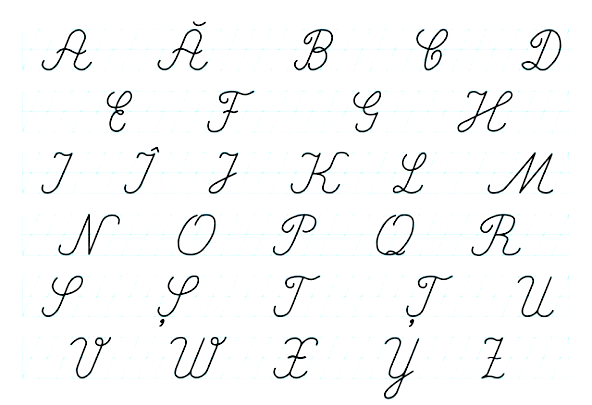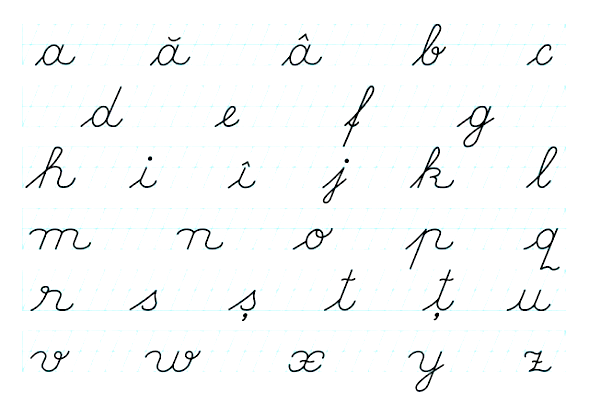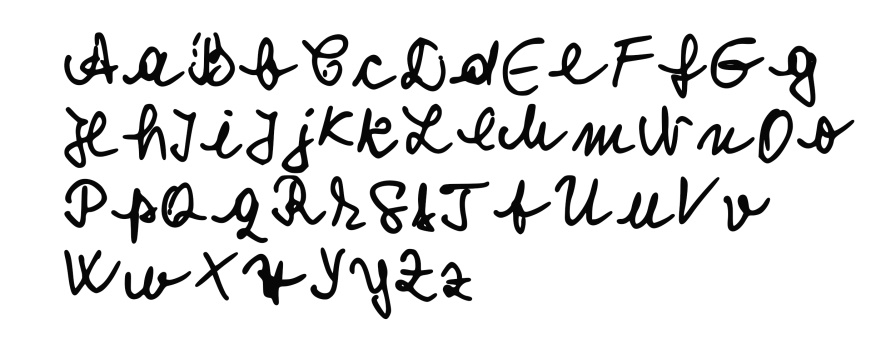Abstract
Developing the writing ability is not only important in building self-esteem for children, but is considered an essential element for success in school, compared to the use of electronic devices, handwriting remains an authentic and important developmental skill for a child. The need for handwriting is revealed by the fact that students may have difficulties in some specific processes that lead to success in reading and writing. These processes are: retrieving letters from memory, reproducing letters on paper, correct spelling, text comprehension.The two important components for handwriting performance is legibility and writing speed. Difficulties in this context with page orientation, spacing, size, inclination and/or alignment of letters and words can affect the legibility of handwriting. Calligraphic writing is a form of immediate communication and continues to be a key competence, both in school context and beyond, despite the widespread use of modern technological devices. Consequently, it is imperative to form handwriting competence in children because this process is the necessary infrastructure for literacy, cognitive and socio-emotional development in children.
Keywords: Handwritingprimary schoollegibilitywriting speed
Introduction
Contemporary society is invaded by technological progress that induces euphoria for keyboard skills development and ignoring calligraphic handwriting. Writing is one of the most genuine inventions of man that resulted from the communication needs. Writing helped forward, transmit and will transmit human progress, as writing on paper using standard means remains even after unexpected circumstances, compared with electronic writing which may be unrecoverable in certain situations. Writing was developed over time as an artistic endeavor, which is called calligraphy - "Kallos" - beauty, "grapfein" – to write. Gheorghe Asachi, the father of artistic education, introduced in 1831, drawing and calligraphy in the general education curriculum (Stratulat, 1971). The first calligraphy manual in Romania knows the light of day under Gregory Plesoianu’s signature with the title "Catalog of beautiful calligraphy for Romanian, French, Russian, German and Greek language" and was published in 1829 in Sibiu. In Romania, in 1860 the Latin alphabet is officially introduce and with this alphabet manuals are being printed in accordance with the existing curriculum. In 1882 is issued the book entitled "Calligraphy for school children of both sexes" by the author Maria Maxim, a book addressing the English teaching methods for writing cursive on 5 intervals. Later in 1929 the authors Constantin Petrescu and Petrescu Drago edit "Palmer’s new method" for writing calligraphy based on the American writing style. Between 1934-1940 authors Zamfiropol Dall and Virgil Condoiu build theoretical basis for teaching calligraphy in Romania, providing methodological guidance. Currently in Romanian schools the current practice is based on the principle of writing with large uninterrupted movements resulting from the balance of the forearm, hand’s only role being that of keeping and moving the pen. Instructional and educational purpose of forming a writing calligraphy is legibility, balanced and fast paced. Calligraphy contributes significantly to the formation of personality, to develop the spirit of observation and attention to the development of the sense of order and accuracy, and the capacity for assessment and self-assessment. Essentially, a page or a paper written with calligraphic writing is an expression of someone’s trained and harmoniously development.
The development of handwriting begins at a very young age in all school systems, even though the cursive handwriting begins only in the first grade around age seven and it further develops throughout the primary years. The necessity of cursive handwriting is revealed by the difficulties that children encounter when trying to express through written words. The difficulties occur in the field of legibility, pagination, spelling and text comprehension. Regarding the first years of his education the child begins to write with a softer utensil like a pencil and as he progressive he/she has to use a stiffer instrument like a pen that constitutes a better guide for the written letters, words and sentences. The gliding of the pen is more controlled and the child can concentrate better on the grip and pressure.
Karin H. James (2006) found that there is a distinct system in the brain that activates during reading and also writing. Also, he and his found team in the same study that handwriting, and not keyboarding, leads to adult-like neural processing in the visual system of the preschool child. The writing process is not an easy task for the young child and with the introduction of the various and nonetheless attractive means of writing (gadgets, computers, keyboards) the cursive handwriting still is an important stage in a child life. During the primary school years, children learn through writing to control themselves and to reflect their inner world out (Ozer, 2009). When it comes to expressivity the child is a relentless human example of creativity and excitement. Everything around him is something new to learn, to absorb, to master. The child needs all the necessary tools for his expression in the contemporary world, where he’s bombarded by new technology and new ideas of expression every single day, where he needs to find his voice and he needs to be able to express himself. One of the most important tool for creating the medium of expressivity is (hand)writing in all it’s forms and it allows the individual to express themselves effectively and to communicate with each other (Erdogan, 2012). Some argue that learning cursive first and print later is better for obtaining a good writing skill (Blumenfeld, 2012). This constitutes a problem in todays teaching system where preschoolers first learn script and later continue with cursive as they enter the first grade. In the Romanian school system the teaching of cursive also starts with script and it continues with cursive in the first grade. The necessary preparation exercises are also taught starting with preschoolers around 5-6 years of age.
The current paper focuses on the introduction of a new writing style for the first graders at a school in Cluj-Napoca, Romania and the improvements and challenges that this implied.
2. Research method
2.1. Participants
A number of Nparticipants=6 primary school children (Nfemale=3; Nmale=3) enrolled in the first grade at a school in Cluj-Napoca took part in the new handwriting style programme that was introduced starting with the first grade. The control group were represented by Nparticipants=11 that were taught to use the handwriting style used in the teaching system in Romania (see figure

2.2. Materials
The teaching material consisted of the new style writing alphabet as depicted in Figure
The base paper used for writing was in accordance with the one used for writing in the first grade (see Figure


2.2. Hypotheses
According to our experiment question, we expected to find a significant difference between the handwritten used by the traditional cursive and the five intervals style of cursive.
2.3. Procedure
At the beginning of every lesson the children did warmup exercises for hands and fingers. There was a set of exercises practiced at the beginning of the class and these include shapes that are helpful for the writing skill further on. These sets of exercises were available for all the students in the classroom, even though eleven were using the usual handwriting style used in the teaching system in Romania.
The six participants that were using the five interval handwriting style were instructed to use the new style in each writing endeavour that they took part in and they were encouraged to use it as often as possible.
The exercises for learning cursive were taught using sets of copy text exercises for both groups. These sessions of copying were done both in the classroom and at home as homework. The students had the task set for every week and they were to receive homework on Monday and on Thursday. The homework was checked at the beginning of the next week and the students received encouragement and also there were discussion regarding the frequent mistakes of spelling or handwriting. The evaluation was made using dictation or copying text exercises in a given time interval. The papers were graded and discussed individually.
Findings
During the approximately six months of teaching the cursive handwriting the children learned how to write almost all the letters of the alphabet. Also the children learned a lot about pagination, alignment, legibility and speed. Considering the beginning of the first year of cursive writing the students performed well in both cursive styles. There were significant differences between the to groups I regards to speed, but this is unclear if this is due to the children’s predispositions to fast learning and writing or the benefits of the five interval writing. The students from the study group showed a more artistic handwriting. Analyzing the papers from the evaluation of the children from the first group we noticed that they manage to write more carefully and more legible. It appears that the students find the writing very approachable. The pagination is done more smoothly and they manage to make fewer mistakes than their colleagues from the control group.
Conclusions
The teachers and also the parents have an important role in the development of writing because the way one person writes could represent them and can have an influence later in life.
Methodical teaching and making the decisions on teaching cursive writing belongs to the teacher, but the responsibility for adopting that type of writing belongs to parents and the child’s family. Learning cursive writing can be a difficult process at first, but when you learn the mechanics it becomes an ally in acquiring new knowledge.
One of the limitations of the current study was the temporal limitation and also the small number of participants. An exact quantification of the results is difficult at this stage in the study because it involves many facets and it requires a transformation into a longitudinal study to conclude whether any of the two types of cursive writing will have benefits for the development of writing in primary school children.
References
- Blumenfeld, S. (2012). How Should We Teach Our Children to Write? Cursive First, Print Later! Retrieved from http://www.thenewamerican.com/reviews/opinion/item/11707-how-should-we-teach-our-children-to-write.
- Erdogan, T. Erdogan, O. (2012). An analysis of the legibility of cursive handwriting of prospective primary school teachers. 4th WORLD CONFERENCE ON EDUCATIONAL SCIENCES (WCES-2012) (Volume 46), 5212-5218. DOI:
- James, K.H. (2012). The Neural Correlates of Handwriting and Its Affect on Reading Acquisition. Retrived from https://www.hw21summit.com/research-harman-james .
- Özer, N.O. (2009). Consciousness of writing, spelling errors and their causes in Turkish alphabet. World Conference on Educational Sciences: New Trends and Issues in Educational Sciences (Volume 1, Issue 1), Pages 1353-1356. DOI:
- Stratulat, C. Martinaș, D. (1971). Some problems of teaching calligraphy at first through fourth grade.
- Didactic and Pedagogical Publisher Bucharest.
Copyright information

This work is licensed under a Creative Commons Attribution-NonCommercial-NoDerivatives 4.0 International License.
About this article
Publication Date
22 December 2016
Article Doi
eBook ISBN
978-1-80296-017-4
Publisher
Future Academy
Volume
18
Print ISBN (optional)
-
Edition Number
1st Edition
Pages
1-672
Subjects
Teacher, teacher training, teaching skills, teaching techniques, special education, children with special needs
Cite this article as:
Simion, A. (2016). The Evolution of Handwriting in Primary School. Comparison between Types of Handwriting. In V. Chis, & I. Albulescu (Eds.), Education, Reflection, Development - ERD 2016, vol 18. European Proceedings of Social and Behavioural Sciences (pp. 596-600). Future Academy. https://doi.org/10.15405/epsbs.2016.12.73

